A new vision and mission
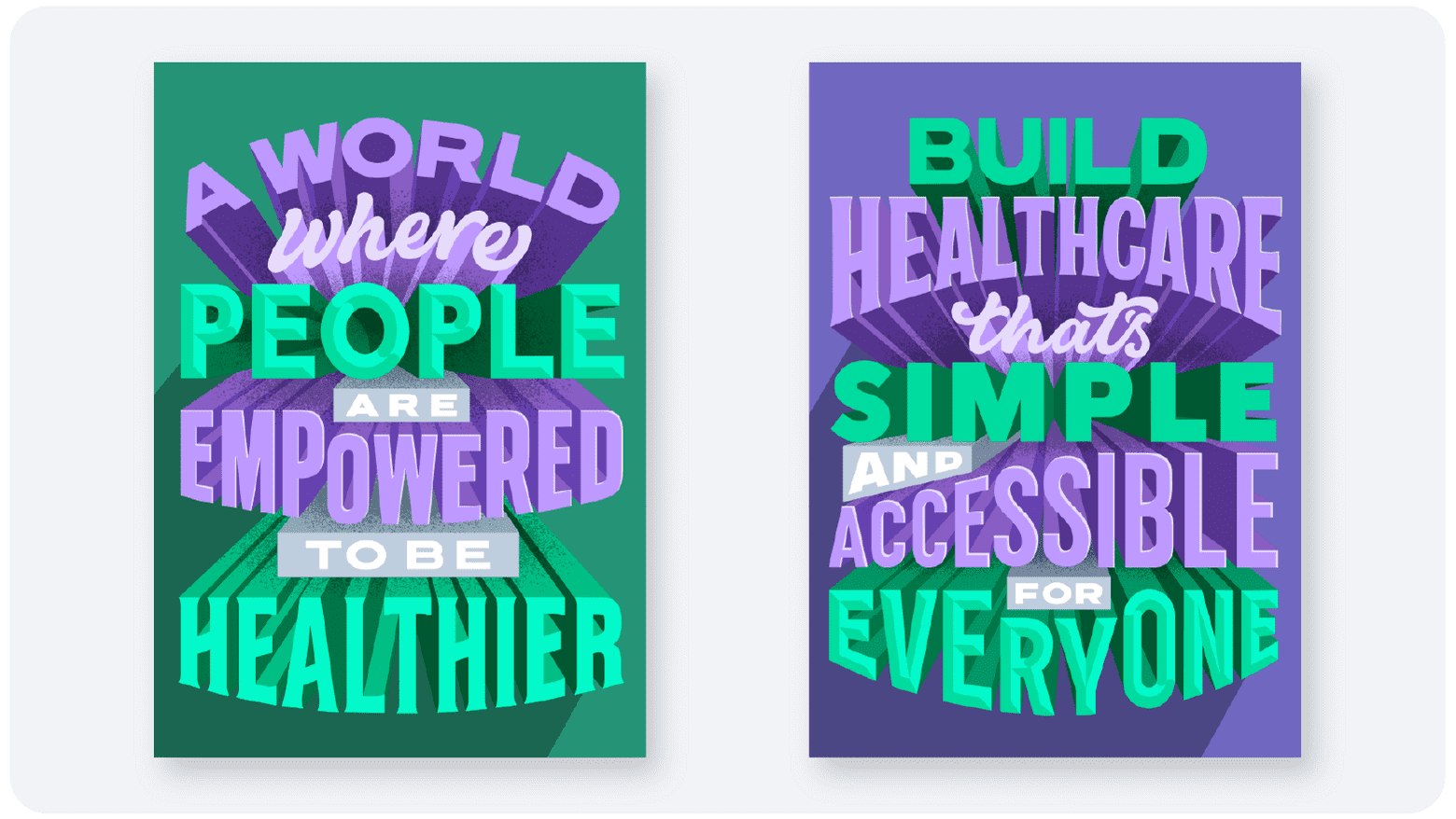
Introduction
A lot can change in a short amount of time, especially in business. People come and go, businesses get acquired, founders leave, teams grow, new opportunities arise, new competitors emerge. The list goes on.
Our company was founded in 2015 by people who rely on medicine to maintain a healthy quality of life. They were frustrated by the hassle of managing their medicine whilst leading busy lives. 2015 seems like a lifetime ago, especially as the past two and half years feel a bit of a blur due to Covid-19. Our business has changed a lot too in this period. We were acquired by LloydsPharmacy, changed our name, moved into a new warehouse and we’ve seen our patient base grow over 400%.
We like to see change as positive. We’re an optimistic bunch at LloydsDirect, we stay committed to our underlying belief of making medicine adherence as simple as possible – with the care and focus centred around people.
So embracing these changes, we wanted to reset the dial and give ourselves some positive long term goals. Our existing mission of ‘making NHS prescriptions simple for everyone’ was good, gave us direction and served its purpose for us as a start-up business. However, we now needed to bring our focus back to how we benefit individuals, communities and the healthcare sector as a whole. We needed vision and mission statements that will stand the test of time.
Our criteria
Establishing the criteria was an important part of the process, it gave us a brief to work to and parameters to stay within. Establishing these also helped set context for others in the business, who would become an instrumental part of this process.
We settled on these three points that would underpin most of the brand work we would be undertaking:
Our vision and mission should…
- reflect our ambition as a business and what we care about
- have relevancy for new products and services we may explore
- reflect our culture and what makes us who we are
Alongside these, we also wanted to show a commitment and evolution of our brand. Both internally and externally.
Our process and approach
So, where to start? These kinds of briefs are, in their nature, often broad and tricky. One of the main challenges is to find something that resonates with all parts of the business, between departments and functions.
The logical place was to start with desktop research – lots of it. Establishing a ‘what does good look like to us?’ approach. Some brands have statements that sound good, but their actual service or product fails to deliver on them.
Alongside the desktop research, I listened to countless podcasts on this subject, how to best implement the statements to help maximise success and buy-in. I was really conscious that we could create statements that were good, but teams and individuals couldn’t relate to. It’s also important for people to understand the rationale for change, get behind it and in turn become ambassadors for it.
Change can be unsettling and uneasy, we all get comfortable with order, familiarity and the way things work. Given how much uncertainty there's been over the past few years, we really wanted to mitigate as much anguish as possible. Any company wide changes would really need consent and buy-in from people across the business to really make them a success.
Our process was to ensure everyone had context before attending. Each workshop was 1 hour long, which meant we had to be strict on time. So, we sent our pre-read documents before each workshop to ensure time was spent on the ideas and brainstorming. The pre-read included examples of other brands' visions and missions, timelines, the workshop agenda and business case.
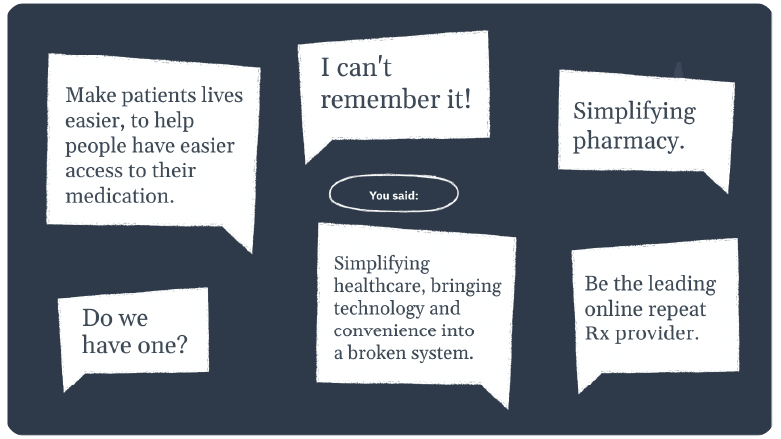
Our workshops were all run remotely using Miro, and later Figjam. Given Covid-19 and restrictions in our offices, this was the only way we could get people together in a safe way. As much as I wanted to do these in person, using a digital platform meant we got a high attendance and participation; location wasn’t an issue. Thoughts and feedback were also documented straight away, which made our lives easier. After each session, we followed up with each group by sending out questionnaires to get individual feedback and suggestions on making the workshops better.
Workshops 1–3 consisted of groups of people from our central teams: engineers, marketeers, patient experience advisors, data analysts, designers, pharmacists as well as colleagues from the goods in and operations teams. Our 4th and final workshop* followed the same structure and format, the only difference was that this session was with our leadership team. We kept the groups to 6–8 people, as online workshops with more participants can be a challenge to facilitate.
Creating the right tone and environment is super important for any workshop. As is setting ground rules so there is a common understanding amongst participants. This, in turn, creates a space people can feel safe in.
All sessions were facilitated by myself and our content team (Bethan and Christa). It was important for the content designers to hear feedback first hand, rather than having to interpret the notes. It also gave them the opportunity to ask clarifying questions. Three heads were certainly better than one, while one person kept the workshop running smoothly the others were able to really listen and note take, which helped keep the energy levels high.
We had so much great feedback in our first two sessions, that themes had already started to emerge. We used grouping and dot voting methods throughout so we had a trail of what and why people fed back as they did.
The first versions of the statements we created were deliberately the most eclectic as a set: one safe option, one outlandish and one somewhere in the middle. Because of the consistency and uniform feedback, we decided to make amends to our proposed statements for the 3rd and 4th workshop.
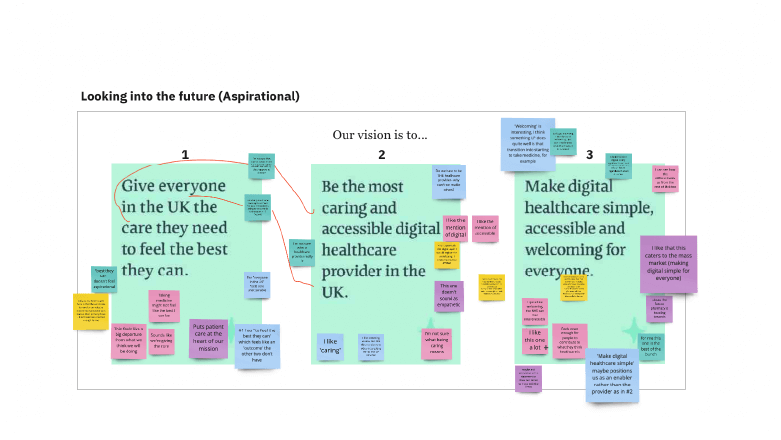
After each session, we scheduled in debrief time while things remained fresh and we could re-play back what we’d heard. The challenge now was to really read into the feedback and untangle what we’d heard and the comments left – was it a particular word that didn’t resonate? Was the feedback out of context? Was it a personal view?
After the 4th session with our leadership team, we were pretty clear and agreed on the general direction. Two clear favourites had emerged, but we still had to work in feedback, which was proving, let's say, difficult.
Being a seasoned designer, I’ve had my fair share of similar situations: being so close, yet so far. A handy method I've found in these situations is to reflect, take time out, then revert to the original brief and intention. And that’s what we did.
As I previously mentioned, we used digital whiteboarding tools in each session. These would now be fundamental in helping in the next step, which was to collate all the findings, feedback, iterations and research into one master board (see below). This made reviewing everything holistically much easier as we could keep reverting back to previous generations and feedback.
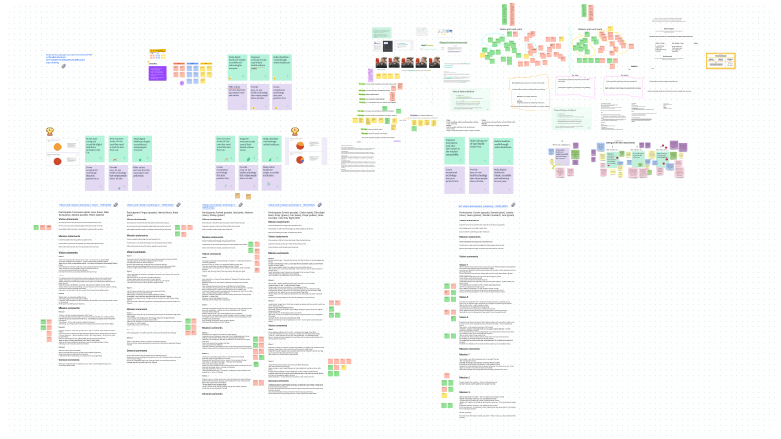
The master board gave Christa, Bethan and myself a steer on what was working and what wasn’t. Next we each iterated on our preferred versions, discussing and agreeing on our preferred options, using our initial criteria to validate them.
Next steps were presenting them back to the leadership team and the whole company!
Bringing them to life
The feedback was very positive, a sigh of relief! As I mentioned, we wanted to ensure they are kept in our minds and used in our day to day. I wanted to do something special in bringing them to life. An illustrator and designer called Rachel Joy was brought to my attention by our Lead Creative, Zac. Her typography work is bold and positive, so it seemed like a perfect fit.
Rachel was up for it and briefed. I personally love working with people who take an idea and put their own spin on it. These pieces needed to reflect our visual brand, so colour choices would help tie these to our LloydsDirect world. I’d seen some lovely hand drawn medicine packaging and shop fronts in West London. As Rachel was going to approach these using a hand drawn feel, it felt like a great place to find inspiration from this era of pharmacy, but with a contemporary twist.
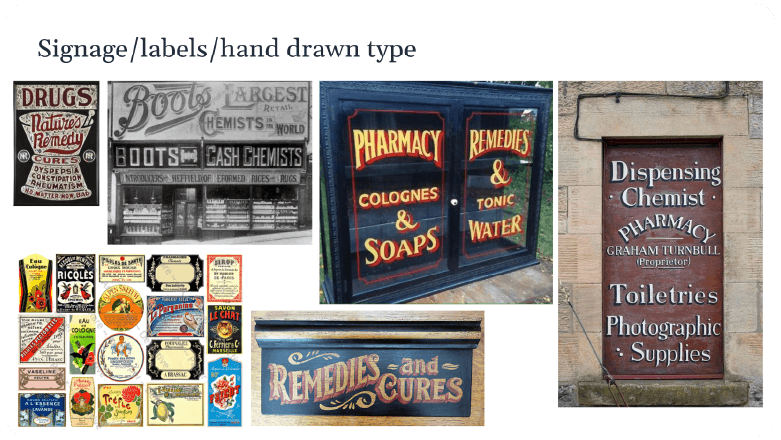
The final statements in all their glory.

Our vision
A world where people are empowered to be healthier
Our mission
Build healthcare that’s simple and accessible for everyone
Learnings
I’m proud of the outcome and what it means to us. It feels aligned with our culture. It’s important to add that the team involved made this a success – bringing people together was the defining factor.
We did receive some very valid and fair feedback around the word ‘healthier’ in our vision statement. We set up numerous chats so we could hear more and understand the feedback. Another workshop was created, following the same structure as the previous ones. The difference was that this time we focused only on the vision and the word ‘healthier’. We invited people within the business who have a long term illness or care for someone who does.
Further research on terminology and tone alongside this was also undertaken. Particularly, looking into healthcare brands, such as the NHS, Bupa and AAH. All brands used the word in a similar way, so we decided to stick with our original statement.
What’s next
We’re currently looking into ways to keep these in our mind's eye – when working on projects and in our day to day tasks. Having them as posters framed in the office will be a helpful reminder. Alongside the posters, we’ve created screensavers and desktop images for when working from home.
We’re now working on our company values, bringing those in line with our new statements. But that will have to wait for another time.
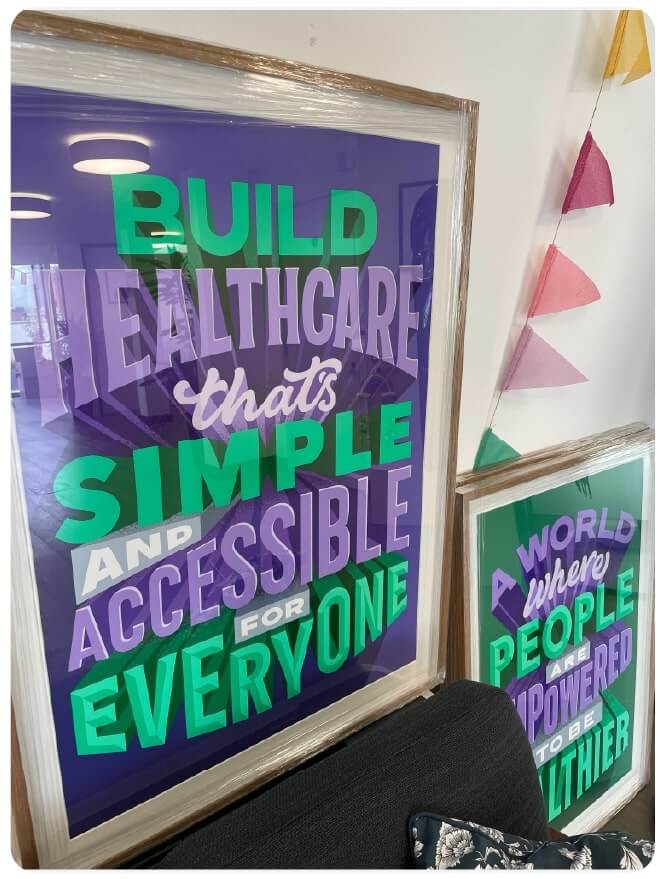
The team involved
Ayesha, Francesca, Huw, Mike, Helen, Fergus, Katie, Harriet, Farhad, Ilya, Melanie, Shirley, Ermina, Claiton, Ellie, Fran, Pooja, Rose, Courtney, Connie, Laura, Loretta, Ana, Declan, Garrett, Vera
Thanks ✌️
Follow us on @BuildingLloydsD